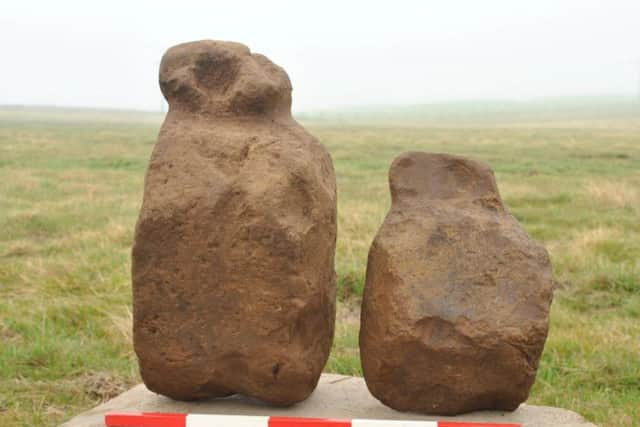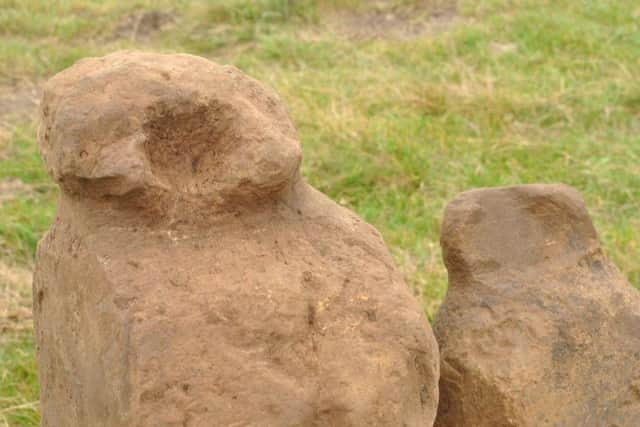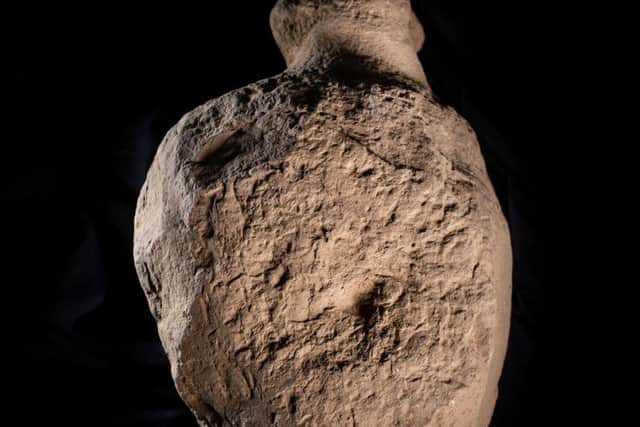Archaeologists discover 'amazing' 4,000 year old carved stones on Orkney
The dig, at an electrical substation in Finstown, unearthed the "amazing" series of 50cm tall stone-carved objects while completing exploratory excavations.
A team from ORCA Archaeology had to dig through 60cm of midden deposits to uncover the ancient artifacts.
Advertisement
Hide AdAdvertisement
Hide AdThe sculptures appear to have all been worked to give them shoulders, a neck and what looks like a head.


They were scattered around a hearth within the remains of structure containing three cists, two hearths and a partial ring of holes packed with broken off upstanding stones.
Three of the roughly carved figures were incorporated within the structure of one of the hearths and in the foundations of one of the standing stones.
It is believed they may have been used to tie mooring ropes onto, to help hold the roof on.
But the purpose of the building and how it was used by the inhabitants of this site 4,000 years ago is still a mystery.


Dating the necked stones will require further work since they have also been found on Iron Age sites in Orkney.
On initial evidence, it is believed the ones from Finstown possibly date to around the Late Neolithic or Early Bronze Age, roughly 2000BC.
Experts are trying to identify the purpose of these stones - and if they are figurines - with a close study for abrasion, wear and any other marks.


Advertisement
Hide AdAdvertisement
Hide AdProfessor Colin Richards from the University of the Highlands and Islands Archaeology Institute said: "This is a significant discovery in Orkney and probably within North West Europe.
"It is very rare to find representations of people in prehistoric Orkney and when found, they are usually individual or in very small groups.
"If they are figurines, to find nine figures within one structure is very exciting and together with the archaeology found at this site has the potential to add to our understanding of Orcadian society in prehistory."
In one of the trenches, long marks were found cut into the clay subsoil, which were made by ards - stone ploughs- providing evidence for prehistoric farming in Orkney.
The prehistoric ploughs were made from wood with a stone shaped into a rough point placed into the wood to plough the soil ready for planting.
It is believed that the survival of these marks, together with the remnants of the Early Neolithic and Bronze Age settlement structures, offers an insight into the prehistoric use of the site over 2,000 years ago.
This included people living, farming and burying their dead across the hillside land.
Pete Higgins, ORCA Archaeology project manager, said: "This collaborative project with SSEN gives us the opportunity to examine an important prehistoric site that would otherwise not have been excavated.
Advertisement
Hide AdAdvertisement
Hide Ad"The exploratory trenches are now recorded and covered over, while the significant artefacts are now cleaned and stored for future study.
"Discussions will take place on the next steps for the development."
Simon Hall, SSEN Environmental project manager, said: "We have been working closely with ORCA Archaeology for the past 18 months while they have undertaken archaeological work at our substation site near Finstown.
"We are delighted that the team have been able to make such a significant find at the site, hopefully furthering the understanding of Orkney's rich heritage.
"We will continue to work closely with ORCA Archaeology and all relevant bodies to ensure this find is appropriately managed for the people of Orkney."
